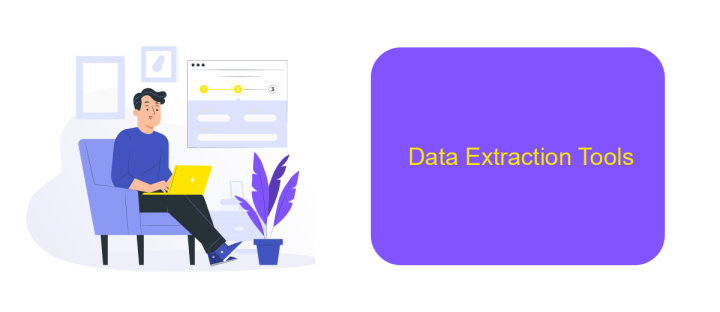Data Extraction Methods in ETL
Data extraction is a critical first step in the ETL (Extract, Transform, Load) process, enabling organizations to gather data from various sources for further processing and analysis. This article explores the different methods of data extraction, highlighting their advantages, limitations, and best use cases. Understanding these methods is essential for optimizing ETL workflows and ensuring data integrity and accuracy.
Introduction
Data extraction is a critical initial step in the ETL (Extract, Transform, Load) process, which involves retrieving data from various sources for further processing and analysis. Effective data extraction ensures that the data collected is accurate, relevant, and ready for transformation and loading into a data warehouse or other storage systems.
- Web scraping: Extracting data from websites using automated tools.
- Database querying: Pulling data directly from databases using SQL queries.
- API integration: Leveraging APIs to fetch data from various platforms and services.
- File extraction: Reading data from files such as CSV, Excel, or JSON.
Among these methods, API integration stands out due to its efficiency and reliability. Services like ApiX-Drive simplify the process by providing seamless integration with numerous platforms, enabling automated data extraction without the need for extensive coding. This not only saves time but also ensures data consistency and accuracy, making it an invaluable tool for businesses looking to streamline their ETL processes.
ETL Process Overview

The ETL process, which stands for Extract, Transform, Load, is a fundamental procedure in data management and integration. It begins with the extraction phase, where data is collected from various sources such as databases, APIs, and flat files. This phase is crucial for gathering raw data that will be processed and analyzed. Tools like ApiX-Drive can simplify the extraction process by automating data retrieval from multiple sources, ensuring that the data is up-to-date and accurate.
Once the data is extracted, it moves to the transformation phase. Here, the raw data is cleaned, normalized, and enriched to fit the analytical requirements. This step may involve data validation, deduplication, and the application of business rules. Finally, the transformed data is loaded into a target data warehouse or database in the load phase. This structured data is now ready for analysis and reporting, providing valuable insights for decision-making processes.
Data Extraction Methods

Data extraction is a critical phase in the ETL (Extract, Transform, Load) process, responsible for retrieving data from various sources for further processing. The effectiveness of this phase directly impacts the quality and reliability of the entire ETL pipeline.
- Full Extraction: This method involves extracting entire datasets from the source system. It is straightforward but can be resource-intensive, especially for large datasets.
- Incremental Extraction: Only the data that has changed since the last extraction is retrieved. This method reduces the load on the source system and speeds up the extraction process.
- API-Based Extraction: Many modern systems offer APIs for data extraction. Tools like ApiX-Drive can simplify the integration process, allowing for seamless data retrieval from various platforms.
Choosing the right extraction method depends on the specific requirements and constraints of your ETL process. For instance, while full extraction ensures completeness, incremental extraction is more efficient for ongoing operations. Utilizing services like ApiX-Drive can further streamline the process, providing robust solutions for API-based data extraction.
Data Extraction Tools

Data extraction tools are essential in the ETL process, as they facilitate the retrieval of data from various sources. These tools help streamline data integration, ensuring that the data is accurately and efficiently extracted for further processing.
Several tools are available in the market, each offering unique features tailored to specific data extraction needs. Choosing the right tool depends on factors such as data source compatibility, ease of use, and integration capabilities.
- Apache Nifi: A powerful, user-friendly tool for data routing and transformation.
- Talend: An open-source tool that supports a wide range of data sources and offers robust ETL capabilities.
- ApiX-Drive: A versatile service that simplifies the integration and automation of data flows between various platforms and applications.
- Informatica: A comprehensive data integration tool known for its scalability and performance.
Using these tools, organizations can efficiently manage their data extraction processes, ensuring that data is readily available for analysis and decision-making. Services like ApiX-Drive can further enhance integration efforts, allowing for seamless data flow between disparate systems.


Best Practices in Data Extraction
Effective data extraction is crucial for ensuring the accuracy and reliability of your ETL processes. One of the best practices is to always validate and clean your data before extraction. This involves removing duplicates, handling missing values, and ensuring that data types are consistent. By doing so, you can significantly reduce errors and improve the quality of the data being extracted. Additionally, it's important to document your data extraction procedures and create a standardized workflow to maintain consistency across different data sources.
Another best practice is to leverage automation tools like ApiX-Drive for setting up and managing data integrations. ApiX-Drive allows you to automate the extraction process, reducing the manual effort and minimizing the risk of human error. It supports a wide range of data sources and can be easily configured to meet your specific needs. Regularly monitoring and updating your data extraction processes is also essential to adapt to any changes in data sources or formats, ensuring that your ETL pipeline remains robust and efficient.
FAQ
What is data extraction in ETL?
What are the common methods of data extraction?
How does incremental extraction work?
What tools can be used for automating data extraction and integration in ETL?
Why is data extraction important in ETL?
Apix-Drive is a universal tool that will quickly streamline any workflow, freeing you from routine and possible financial losses. Try ApiX-Drive in action and see how useful it is for you personally. In the meantime, when you are setting up connections between systems, think about where you are investing your free time, because now you will have much more of it.

